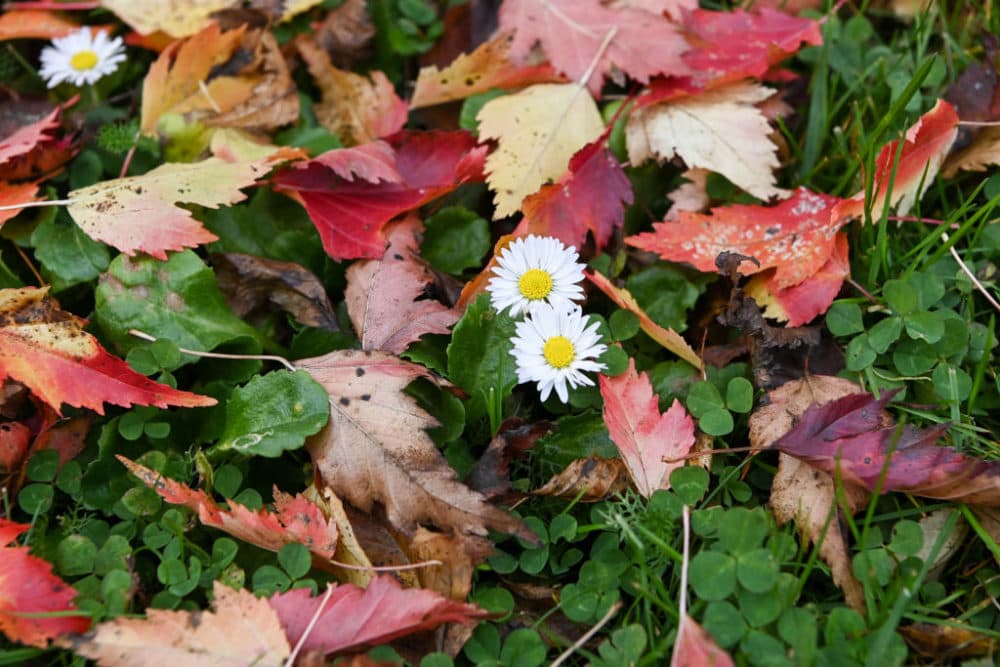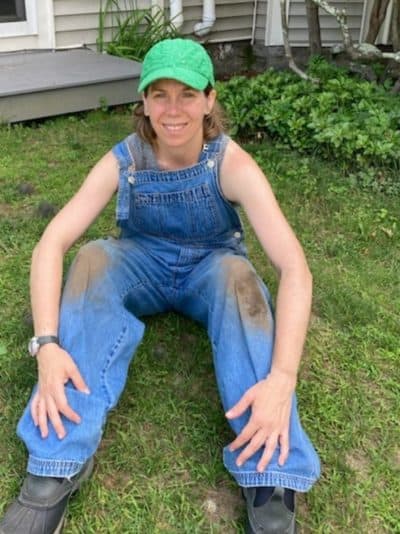Advertisement
Commentary
In my mother's garden

The annual surprise of spring color always thrilled my mom. The landscape in her New England town is indistinct one day, bursting with forsythias and redbuds the next — but this year, she missed the show.
On the night of her death last winter, her house became a museum — her coffee cup, an artifact holding memories as indelible as the 1986 handprints preserved in the cement of her basement floor. The plan was to sell Mom’s house, my childhood home. When I needed a break from packing up, I walked the perimeter of her small yard. Often, a doting neighbor accompanied me. Initially, we discussed the snow, then sprouts and shoots as the earth greened up.
A serious gardener, my mother had wished I could share her excitement over bushes pruned back from the brink and other growing successes. Instead of gushing with admiration for how she tended her flowers as friends, I was frequently dismissive, impatient with rabbit woes and vegetable milestones. Yet last June, in the days before listing her house for sale, I was pained by the idea of losing her garden. Everywhere I looked, I could see and feel her love and devotion; leaving her plants behind meant leaving her too.
So, with my birthday on the near horizon, I planned a dig out party. My dear fine-gardening friend Tara offered to assist.
As we surveyed the beds, Tara provided the names of all the flowers I admired. “Take the Epimedium. You want the Epimedium,” she counseled. “Epimedium, 5,” I penned on the sign designed to indicate which, and how many, plants would travel to my house. “Pulmonaria, 3,” “Hellebore, 2.” I put duplicate placards around my yard so helpers could be in on the transplant plan.
Everywhere I looked, I could see and feel her love and devotion; leaving her plants behind meant leaving her too.
The following evening at my mother’s house, guests from different corners of my life congregated for my “Bring Your Own Shovel” birthday.
My best friend since second grade introduced herself to my colleague. The neighbors I knew as a kid opened their doors and joined the party. People came because they loved me, because I loved my mom, because she loved her garden, and because it was my first birthday without her.
The next morning, I was too busy to lament the impending “For Sale” sign at Mom’s house. Van Morrison crooned and my daughter cartwheeled as friends in my own backyard helped to escort everything we’d pulled from my mother’s garden back into the soil.

In July, three weeks or so after the dig out, I texted Tara a picture of the rock garden experiment she had encouraged. The lavender, dianthus and rosemary or “suffering plants,” as she characterized them, were doing just fine, but the lamb’s ear looked peaked. “They’re just in shock. Plus, I see new growth there. Patience, Grasshopper,” she replied. Sure enough, the lamb’s ear bounced back.
Normally if we go away for a few days, we leave Mother Nature in charge. But in August, we enlisted backup. I was worried about a lilac given to me by a friend on Mother’s Day. The bush lives beside my front door and brings me cheer each time I walk past it. Also on my mind were houseplants tucked in the shade of an andromeda. Our neighbor’s capable, generous hands were glad to hold the hose in our absence.
Due to a lingering injury, I have not consistently been a good friend to my mother’s plants. Several weeks ago, I panicked, picturing the new owners of my childhood home enjoying her flowers, offering them more attention than I provided. My stomach constricted with regret, and I was seized by an urgent need to provide immediate care to her transplants.
Outside in the October morning sunshine, I crouched on my knees. Moisture from the cold ground seeped through my pajamas. Eye level with her tiny mountain laurel, I used my fingers to rake leaves from underneath the shrub and around a clematis that had twinkled with handsome star-shaped blossoms. A small worm undulated past my pinkie before ducking beneath Mom’s lemon ball sedum. Indeed, the lavender had suffered, more dead than living from what I could discern. But when kitchen scissors sliced through the sprigs, the air smelled like the sachets my mother had kept in her dresser.
Mom was famous for her catch phrases and wisdom. Confident in the tenacity of plants, she used to say, “Things want to grow.”
Conditions don’t have to be perfect for plants to flourish, or for people either.
All the plants from her garden, even when ignored, have persisted. Orchids, roses and kalanchoes given to me the week she died are still hanging on, as is a dishwasher-sized peace lily that dominates our windowless bathroom.
That October morning, I considered the giant peace lily in a way I hadn’t before — the strength and intention of each green stalk. I had focused on the fronds, but never the space between stems and how light moved among the shoots. White flowers twined in their infancy and then, like pole vaulters, pushed up through the center to the crown. Their deceiving blooms suggested an effortless journey, when in fact, fortitude is required to grow.
To be alive is to be resilient. Conditions don’t have to be perfect for plants to flourish, or for people either. We, too, can resolve to persevere instead of wither, to reach through the darkness toward the light.
